9. Body Visibility
Because of all the objects that can obscure their bodies, the quality of a bird photograph often depends on how much of the bird the photographer has captured. Like the previous Component Head Position, Body Visibility has just two Levels of Quality.

Let’s go through each Level of Quality for Body Visibility with some example photographs from each of the Four Types of Bird Photograph.
Level of Quality 1: Parts of the head and/or body are obscured = Documenting Shot or Good Bird Photo
We start with the most obvious point – if a bird’s body or head is obscured the quality of the final photograph will be low. Below is a Mountain Imperial Pigeon taken in Thailand. The shot from below reduces visibility of the head and the large branch it sits on obscures much of the bird. A Documenting Shot quality pic.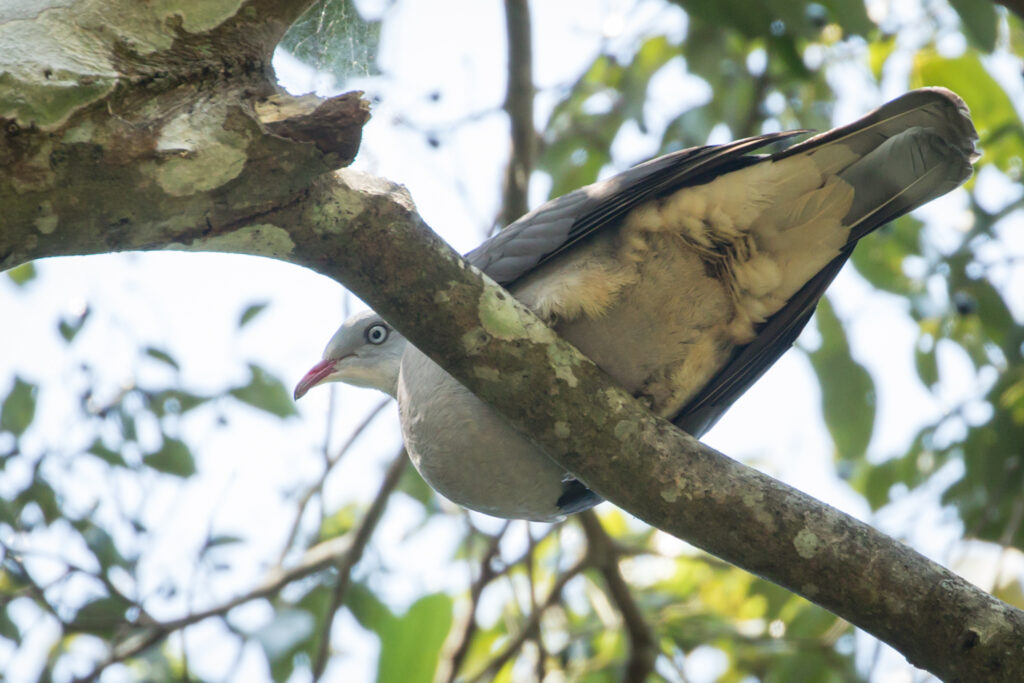
Next is a Louisiana Waterthrush from behind. The body of the bird is actually obstructing the head. A Good Bird Photo quality photograph.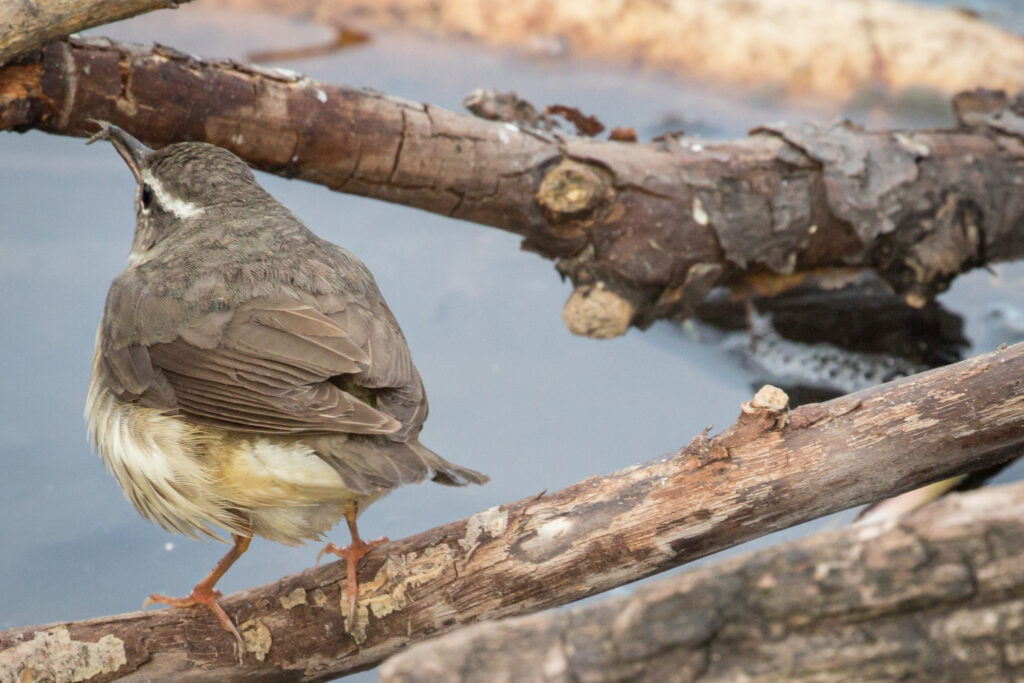
At times birds hide in the foliage of a bush or tree, only to pop out their head for a peek. When most of the bird’s body is hidden it usually results in a Good Bird Photo quality photograph like the Mourning Dove below. We clearly see the head but little else.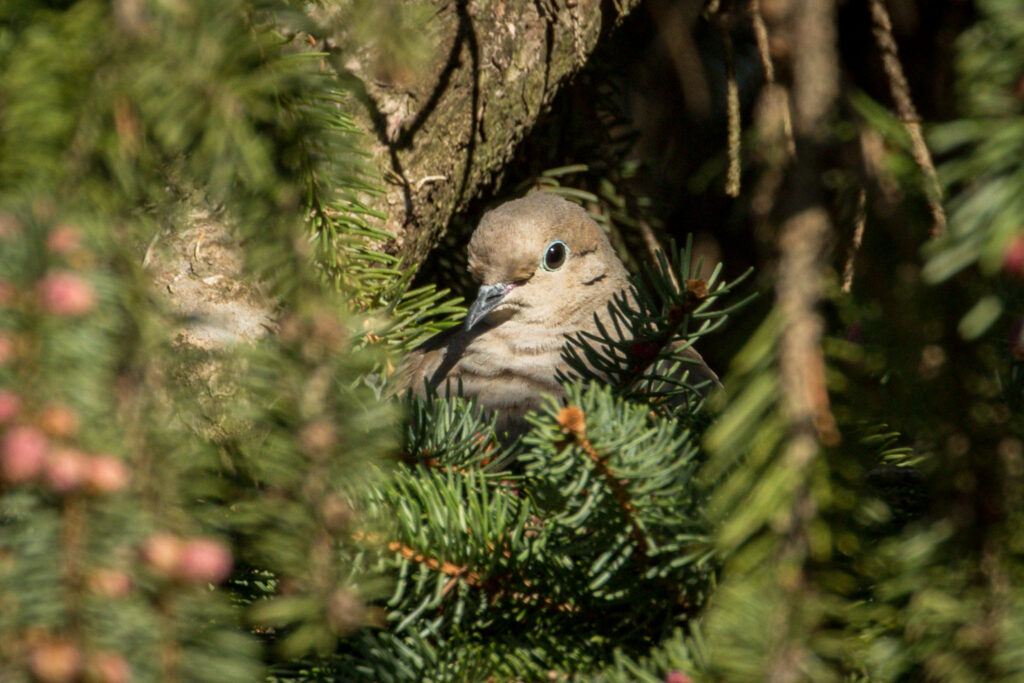
In the photograph of the Yellow Warbler below the head pops up but much of the lower body is covered in leaves. Not a bad photograph but the quality is reduced to Good Bird Photo because of the amount of the body obscured.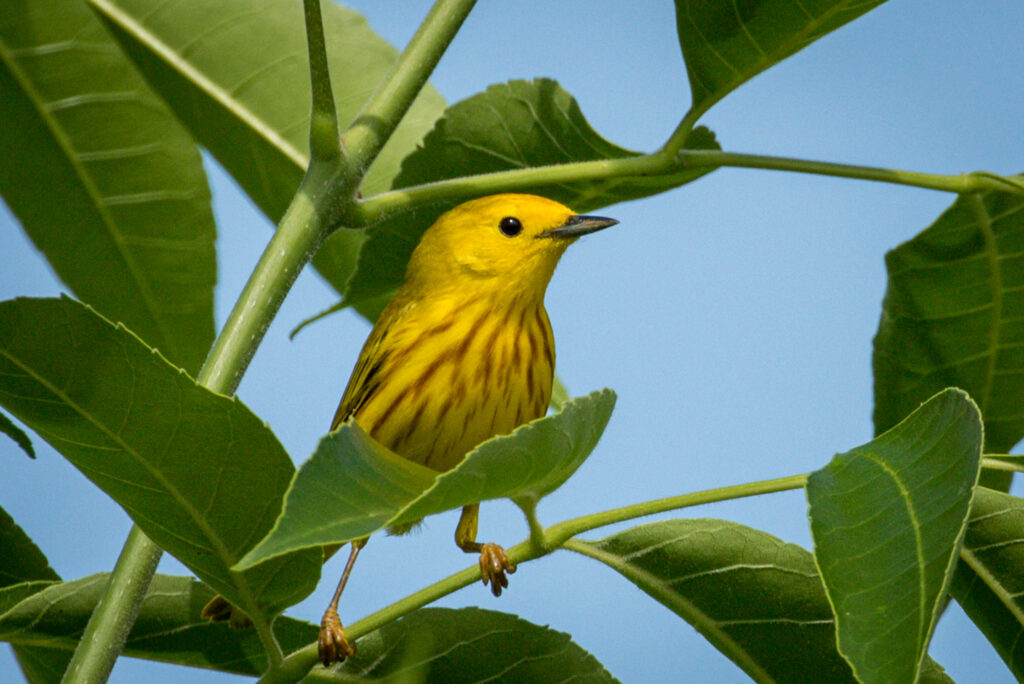
As previously stated the head of the bird is the most important part of a bird photograph and if it is obscured the quality of the photograph suffers. In our Tree Sparrow example below a branch crosses over its breast and head. Although the overall picture is good, because the head is obscured the quality of this photograph would be deemed Good Bird Photo.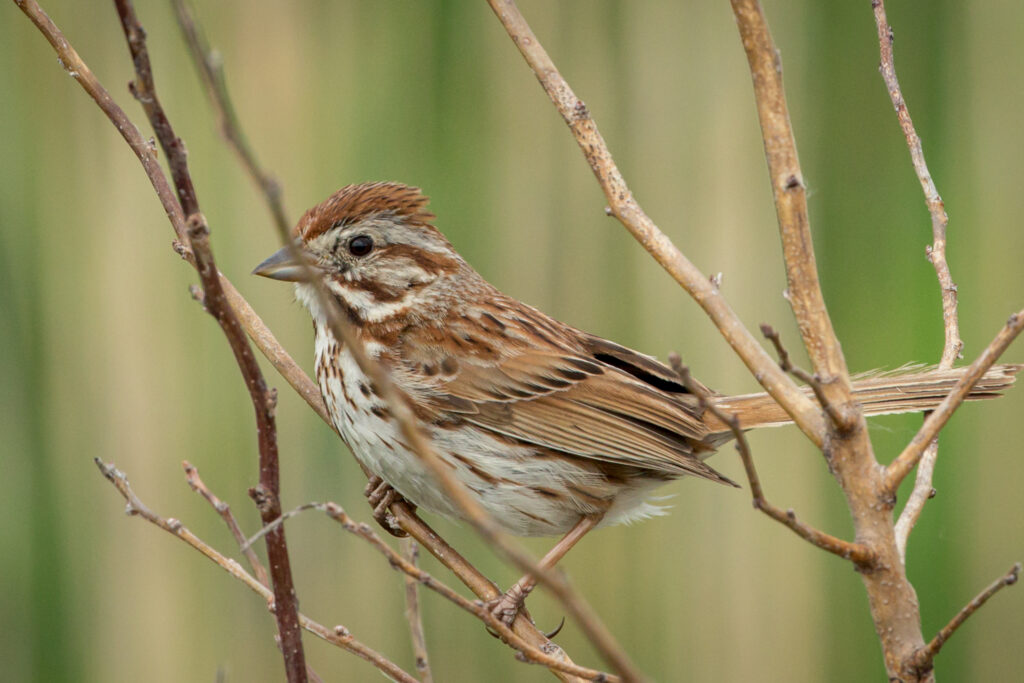
Level of Quality 2: The bird is unobscured* = GreatBirdPic or Award Worthy
It is practically impossible to get a picture of a bird in which no part of it is obscured. If it is perched, parts of its feet will be obscured. If it is floating on the water the lower part of its body and feet are obscured. Even when flying parts of the bird will be obscured by its own wings. Recognizing this, bird photographs with very little of the bird obscured will rate higher (holding factors such as Focus, Lighting, and Composition constant). Note however the asterisk (*) here – this gives the bird photographer some “wiggle room” when creating their final image. The photographer may select an image in which some of the bird is obscured, but the overall quality of the image may still be judged GreatBirdPic or Award Worthy.
Take the photograph of the Mourning Dove below. Much of the body is obscured by the nest and surrounding twigs, yet the head and neck are in good focus, and the colors are engaging. In fact, the twigs and nest help to frame the dove within the photograph. All this yields a GreatBirdPic quality bird photograph.
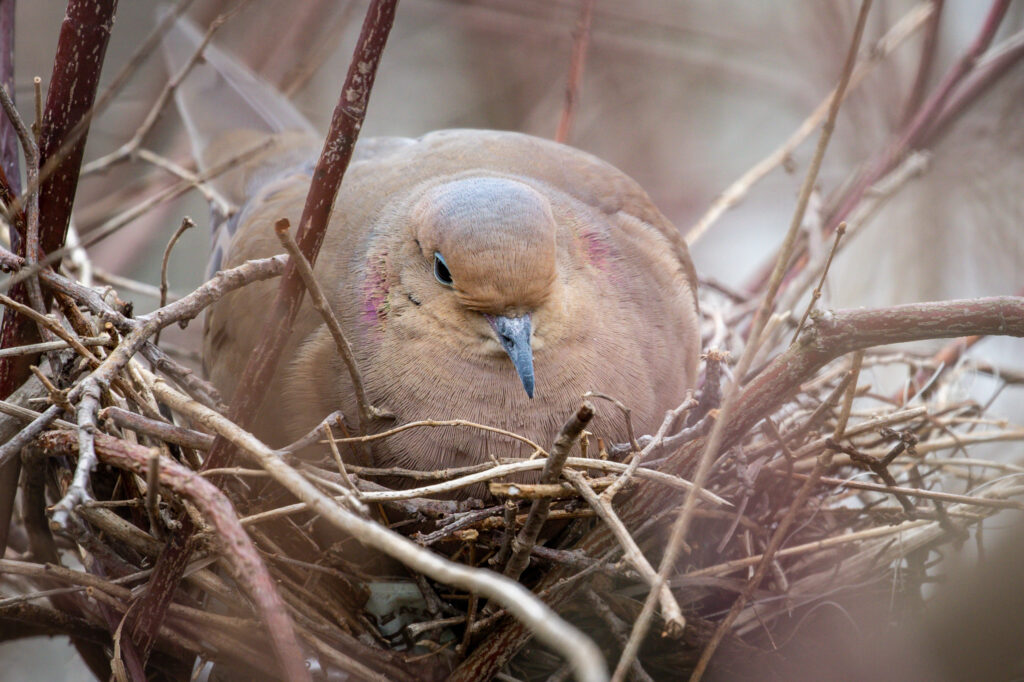
Our final example shows a Snowy Egret passing behind a Roseate Spoonbill. Some of the Snowy’s body is obscured and the Spoonbill’s feet are in the water. Even though parts of the birds’ bodies are obscured the overall quality of this photograph would be judged Award Worthy because of beautiful composition.
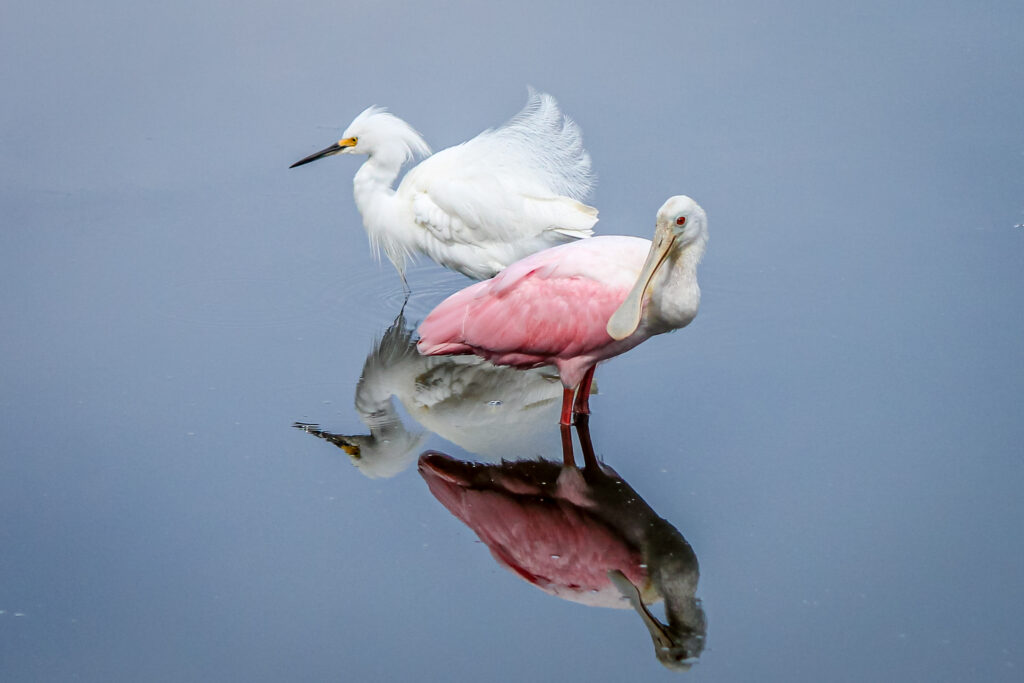
In conclusion, our viewers want to see as much of the bird as possible. When the body, particularly the head, is obscured the photograph’s quality will be judged low: the more obscured, the lower the quality
Next, the final QSAR Component of the Image Characteristic Content: 10. Environment.
Stay Safe. Go Birding. Take Pics. Share Here. Repeat.
Mike
If you would like to learn more about GreatBirdPics.com CLICK HERE. Members can upload their GreatBirdPics, communicate with other members, and receive regular emails about bird photography.